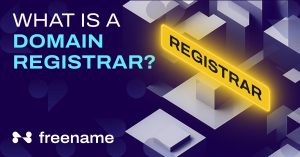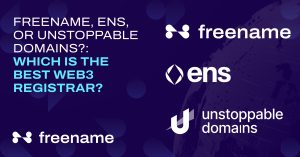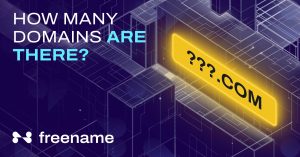Building a website from scratch can seem daunting, but this guide will prove the opposite! In fact, making a website from scratch takes as few as 5 steps: let’s break them down. You will then see that creating a website, in addition to being useful, can be easy and fun. Let’s learn How to build a Website from zero.
In today’s digital world, a website is vital for businesses, creators, and personal branding. This A-to-Z guide clearly explains the process, walking you through every crucial step—from initial idea to a live, functioning website—making website creation clear and manageable. You will discover how to plan a website, choose a domain name and hosting services, design the website structure, create valuable content, and start to navigate the Internet as an active user!
Phase 1: Planning Your Website from Scratch
Planning how to build your website is the blueprint for success. There are some key steps that you must take at this stage, before anydesign or coding begins:
- Define Your Website’s Purpose. Which is your primary objective? Is it to sell products, provide information, generate leads, showcase a portfolio, or build a community? Identify some SMART (Specific, Measurable, Achievable, Relevant, Time-bound) goals you want to achieve with your website.
- Define Your Target Audience. Try to imagine the typical user you want to reach. Gender, occupation, age, location are all important factors in defining your audience. Adapt your idea to this audience, establishing some valuable and recognizable connections to their interests.
- Research competitor websites. You can get a lot of inspiration from them! Once you have assessed their strengths, you can emulate some aspects, while looking for gaps where you can differentiate.
- Establish a budget. It is very hard to start building a website for free. Potential early costs include the registration of a domain name, web hosting, premium themes or plugins (if you want them), and possibly fees for designers or developers if you outsource the work (see below).
Phase 2: Domain Name & Hosting Services
Once you have a plan, it is time to lay secure foundations for your website. To do this, you must identify a domain name and a hosting service, which will constitute the online address of your website. Although these are technical concepts, it is easy to grasp the basics.
Picking a Domain name
Your domain name is your unique web address. Aim for short, memorable, relevant, and easy-to-spell names. Domain names typically consist of two or three parts: the SLD is the core of your online address, since it is the alphanumeric string that will identify your website. Try to choose easy-to-remember and easy-to-type domain name. The best domain names are short and employ keywords relevant to your field. Then choose your domain extension among the many available (.com, .us. .net…). If your website is particularly large, you can organize its different parts using subdomains.
To acquire the right to use a domain name, you first need to browse for it and check whether it is available or not. In order to register it, you must pass through an ICANN-accredited registrar and then renew your registration right from time to time. The registration fees will depend on the registrar.
Choosing a Web Hosting Provider
Web hosting provides server space for your website files. There are several types of hosting plans, which include Shared Hosting Services (an affordable choice popular among beginners), VPS (offering more resources and tools), Dedicated Servers (which guarantees maximum control over the server). When selecting a hosting plan, key factors which must be checked include the server reliability, speed, security, support, scalability, and price. Double check for server location, CDN integration and SSL certificates.
Phase 3: Design & Develop a Website
Now it is time to start working on your website and implement your idea.
- Structure Your Website. Plan your page hierarchy and navigation with a sitemap. Use wireframes for basic page layouts, focusing on user flow. Again, look at your competitors to see what seems to work, but don’t be scared to try something new.
- Design the User Interface (UI) and User Experience (UX). Choose a theme or create a custom design and then apply it consistently. Unleash your fantasy! Prioritize mobile-responsiveness and accessibility.
- Build Out Your Pages and Functionality. Create essential pages: Homepage, About, Services/Products pages, and a Contact page are customarily included in most website layouts. Furthermore, you must now design the website pages essential for your own project: are you a writer, or do you want to realize a tool-website, or do you aim at selling products? In any case, different digital environments are going to be needed.
DIY vs Professional website building solutions for beginners
A DIY site is an inexpensive website you build yourself using online platforms. It might be the right choice if your budget is tight, and it is always a good start to assemble a website for beginners. The main con is that if you want to customize the user experience or dramatically change the website structure, you will likely need to upgrade, as DIY platform tools have limits.
Conversely, a custom professional website is built made-from-scratch by a professional. It is a custom-designed website, and it ensures a distinct look as well as full compliance with your desires. However, unless you are a developer, you will need to outsource the website’s creation to someone else who is an expert in website building and coding, and this usually implies higher costs.
Phase 4: Creating Compelling Content
Now your website truly comes alive! This phase is all about crafting compelling content able to captivate your audience and create your web presence. Once the foundations are set, you must create quality content that engages your audience and keeps it focused.
If your goal is to sell products or services, you could develop persuasive pages rich with details that highlight the value of your offerings. Alternatively, if your passion lies in sharing written works, be it insightful articles, practical instructions, or news, dedicate your energy to connect the writing with your readers.
Lastly, mind the legal essentials. Pages like a Privacy Policy (vital if you’re collecting any user data) and Terms & Conditions are often legally required, especially if you are a merchant. DIY websites may ease these aspects.
Search Engine Optimization
SEO (Search Engine Optimization) techniques are aimed at boosting your website’s visibility and ranking in search engine results (e.g., Google), ultimately attracting more people to access it. Its importance lies in driving targeted visitors, as higher rankings translate to increased brand exposure, more potential customers, and greater credibility. For a website just started from scratch, foundational SEO begins with thorough keyword research to discover terms your audience uses. Next, implement SEO within your website pages, that is, endeavor to create valuable, relevant content around these keywords; optimize page titles, meta descriptions, and header tags (H1-H6) for clarity and relevance, use eye-catching images, and ensure your site is mobile-friendly and loads quickly.
Phase 5: Launch the Website
Before launching the website, run all pre-launch checks by testing all links, forms, and features. Verify compatibility and page load speed across different browsers and devices; proofread all content.
Once you have completed these tasks, the exciting moment arrives: your dream has come true! The website is now ready to be launched. After generating your website website, announce it and share the news with your audience on social media, via email, and through other relevant channels.
In the following months, monitor security and don’t neglect maintenance. Keep your software and plugins updated and ensure your SSL certificate is active. Even more important, don’t let your domain name expire! If you want your website to grow, you can continuously improve it by adding fresh content, refining SEO efforts, and monitoring its performance with analytics tools.
(Read More: How To Start a Blog and Make Money)







